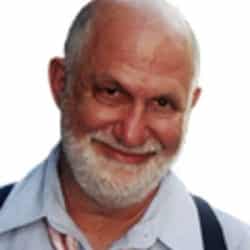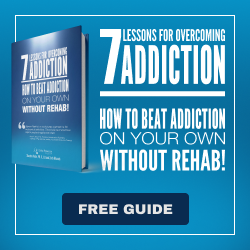After 75 Years of Alcoholics Anonymous, It’s Time to Admit We Have a Problem
For much of the past 50 years or so, voicing any serious skepticism toward Alcoholics Anonymous or any other 12-step program was sacrilege—the equivalent, in polite company, of questioning the virtue of American mothers or the patriotism of our troops. If your problem was drink, AA was the answer; if drugs, Narcotics Anonymous. And if those programs didn’t work, it was your fault: You weren’t “working the steps.” The only alternative, as the 12-step slogan has it, was “jails, institutions, or death.” By 2000, 90 percent of American addiction treatment programs employed the 12-step approach.
In any other area of medicine, if your doctor told you that the cure for your disease involved surrendering to a “higher power,” praying to have your “defects of character” lifted, and accepting your “powerlessness,” as outlined in the original 12 steps, you’d probably seek a second opinion. But, even today, if you balk at these elements of the 12-step gospel, you’ll often get accused of being “in denial.” And if you should succeed in quitting drinking without 12-step support, you might get dismissed as a “dry drunk.”
Fortunately—just in time for the implementation of the Affordable Care Act, which mandates that substance misuse be covered in a way that is equivalent to coverage for physical illnesses—a spate of new books is challenging the 12-step hegemony. Last year, the bestselling author David Sheff published Clean: Overcoming Addiction and Ending America’s Greatest Tragedy, which includes a chapter aimed at debunking the idea that AA is the only way. The author Anne Fletcher released Inside Rehab: The Surprising Truth About Addiction Treatment and How To Get Help That Works, a deeply reported exposé on the poor results and exorbitant prices of upscale rehab centers. And the journalist Gabrielle Glaser came out with Her Best Kept Secret, which illustrates, among other things, how forcing AA attendance on women makes them easy prey for sexual predators.
The latest salvo comes from Dr. Lance Dodes, the former director of Harvard’s substance abuse treatment unit at McLean Hospital, who weighs in with a book called The Sober Truth: Debunking the Bad Science Behind 12-Step Programs and the Rehab Industry. While much of Dodes’ diagnosis of the problems with rehab and 12-step programs was originally made by maverick psychologist Stanton Peele in books like The Meaning of Addiction (1985), Dodes benefits from several decades of additional data, and he covers complicated scientific issues lucidly. The results are largely persuasive.
Dodes doesn’t pull his punches. “Alcoholics Anonymous was proclaimed the correct treatment for alcoholism over seventy-five years ago despite the absence of any scientific evidence of the approach’s efficacy,” he writes in his introduction, “and we have been on the wrong path ever since.”
Dodes shows that much of the research that undergirds AA is a conflicted mess that confuses correlation with causation. It’s true that people with alcoholism who choose to attend AA regularly drink less than those who do not—but it’s not proven that making people attend works better than other options, including doing nothing.
In fact, some studies find that people mandated into AA do worse than those who are simply left alone. (If true, that would be no small problem. AA’s own surveys suggest that some 165,000 Americans and Canadians annually are court-mandated into the program—despite the fact that every court ruling on the issue has rejected such coercion as unconstitutional, given AA’s religious nature.)
Contrary to popular belief, most people recover from their addictions without any treatment—professional or self-help—regardless of whether the drug involved is alcohol, crack, methamphetamine, heroin, or cigarettes. One of the largest studies of recovery ever conducted found that, of those who had qualified for a diagnosis of alcoholism in the past year, only 25 percent still met the criteria for the disorder a year later. Despite this 75 percent recovery rate, only a quarter had gotten any type of help, including AA, and as many were now drinking in a low-risk manner as were abstinent.
Unfortunately, compared to the rehab narrative, the stories of people who get better without treatment are rarely as compelling. They tend to consist of people leaving college and realizing they can’t binge drink or take drugs and hold a job and care for a family. And since most people who straighten out on their own never show up in treatment, the worst cases congregate in rehab and make addiction recovery seem quite rare.
This is not to say that there is no benefit at all to 12-step programs: It’s clear from studies of recovery, with or without treatment, that some of the most important factors in success are having social support and a sense of meaning and purpose. Both of those can be provided by AA—at least to those who find its approach amenable. Rather than treating AA as one potentially excellent resource out of many, though, all too many people still regard 12-step programs as the only true way.
One effect of this 12-step dominance is that addiction continues to be seen by many people as a moral failing rather than a disease. This is somewhat ironic, because many 12-step advocates firmly consider addiction to be a disease, as do government agencies like the National Institute on Drug Abuse. But it is awkward to posit addiction as a disease while simultaneously promoting AA’s non-medical and moralistic course of treatment. For what other medical condition does 90 percent of the treatment consist of meetings and prayer?
Dodes is eloquent on what drives addiction, and his argument that much of it results from an attempt to counter a sense of helplessness is convincing. In his view, addiction is a compulsive disorder, an attempt to cope with anguish by engaging in ritualistic behavior that is soothing and predictable, despite ongoing negative consequences.
But Dodes stakes out dubious territory with his claim that some compulsive disorders, like obsessive-compulsive disorder (OCD), are primarily chemical in origin, while others, like drug addictions, are purely psychological. Most psychologists reject this idea—a fact Dodes fails to acknowledge.
Dodes advocates traditional treatment, such as talk therapy and medication, for what he labels “chemical” compulsive disorders (including most of what the Diagnostic and Statistical Manual of Mental Disorders calls OCD). For instance, someone who can’t stop washing his hands might receive Prozac and a specialized type of talk therapy. But Dodes recommends individual therapy for what he labels “psychological” disorders—including what we commonly think of as addiction. Specifically, he prefers psychodynamic therapy, which involves looking deeply into a patient’s past and often takes years to bear fruit.
Unfortunately, psychodynamic therapy has not been found to be any more effective than the 12-step programs Dodes so ably eviscerates. Although he admits he has his own bias in advocating psychodynamic therapy, Dodes thinks it’s an approach that hasn’t yet been studied well enough for its true effectiveness to be reflected in data. This is an unsatisfying answer. In a major review of the literature featured in The Handbook of Alcoholism Treatment Approaches, psychodynamic therapy ranked 46th out of 48 in effectiveness for treatments of alcoholism, even lower than Alcoholics Anonymous, which ranked 38th. It seems unlikely that additional study will cause a complete inversion of those numbers. (The review was notorious for finding an inverse correlation between what is most practiced in treatment and what is most effective in helping people.)
Dodes also fails to mention the success of certain approved medications for addictions—like buprenorphine and methadone for opioid problems, which have been shown to be more effective than any type of talk therapy or self-help in terms of saving lives and reducing the spread of blood-borne disease, according to the Institute of Medicine and the World Health Organization.
Still, Dodes has a deeply humane understanding of the ailments he studies, and has made an excellent case for why we need to overhaul our treatment system and provide more evidence-based options. If his book has weaknesses, they only underscore how much we still need to learn if we want to cure the multifactorial disorder we call addiction.






Drug Court has effectively killed twelve step. Our town was a pilot program for Drug Court. Within a year the big Alano Club and NA hall closed with 90 percent of the meetings. I see it in every town but no one else does. They come up with odd statements like “Yea no one from Drug Court gets clean but at least they know where the meetings are now”. As if finding meeting was a big problem. Or, “The seed has been planted and we will be seeing all of these people back here on day”. Well I have 33 years clean and haven’t see any come back yet. They can’t leave fast enough.